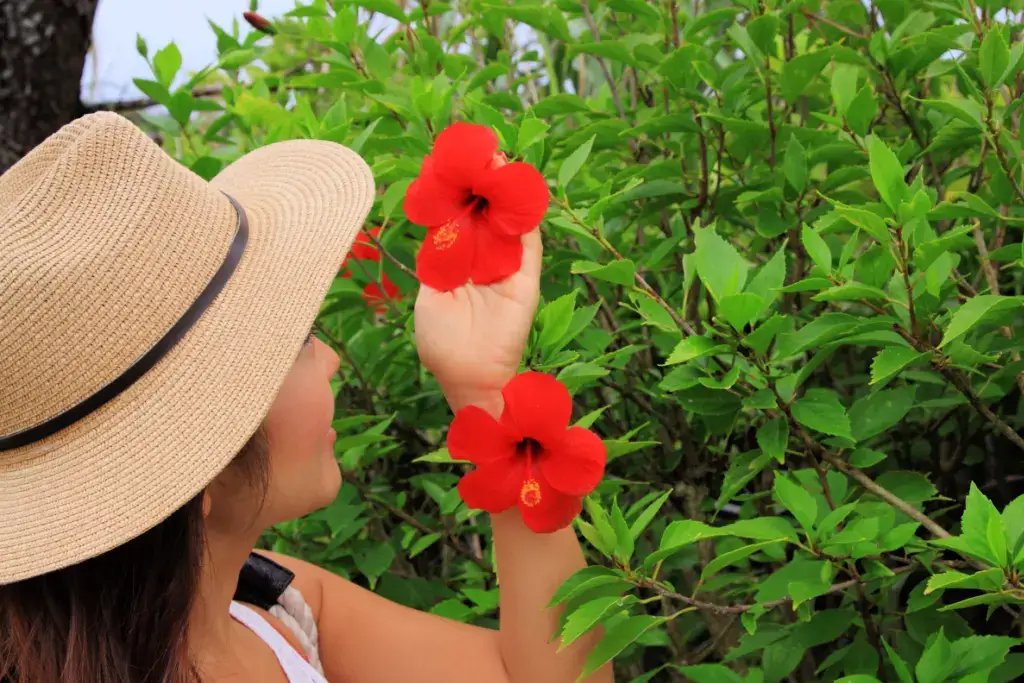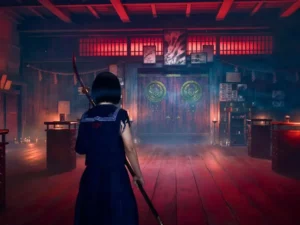The hibiscus flower in Japan has been admired for centuries for its beautiful and vibrant blooms. With various colors, shapes, and sizes, the hibiscus has become a beloved symbol of Japanese culture and is found everywhere, from gardens to artwork.
Table of Contents
ToggleWhat is the hibiscus flower?
This flower is usually red and grows in tropical, subtropical, and temperate regions. In the wild, it usually sprouts in early spring after a year-long growing season. But it is so easy to clone from cuttings that seeds are seldom needed. Hibiscus plants come in many different species. Some are only one meter high, while the tallest hibiscus plant on record (Hibiscus nastatus) is over eight meters (26 feet) tall.

They also can be as small as five centimeters or as large as a dinner plate. Because of the many types of flowers, hibiscus plants are popular as houseplants. When kept in a pot, hibiscus plants can be delicate. They need full sunlight and enough nutrients, but their leaves turn yellow if overwatered. Potted hibiscus plants must have well-draining soil that is high in organic matter.
However, hardier native species like the swamp rose mallow can survive even in marshy ground and extreme cold. If cared for properly, hibiscus plants can produce flowers all year round. Outdoor hibiscus flowers attract many insect pollinators, but pests can harm the plants. In this case, be sure to use natural pesticides for your plant and for yourself.
What does the hibiscus flower look like?
Most hibiscus in the world come from the wild Hibiscus rosa sinensis, the most common type. The flower has five medium-sized petals of one color, called the “plain” or “traditional” type. However, some wild species, such as the Japanese Lantern (Hibiscus schizoepetalus), have two rows of petals. These are called “double” hibiscus. Red is the most common color for natural varieties but can also be white, orange, yellow, purple, and brown. Cross-breeding has created many man-made hybrids with unique colors and patterns.

What does it symbolize in Japanese culture?
In Japan, hibiscus (pronounced “Haibisukasu” in Japanese) is sometimes used to welcome visitors. Some believe it shows the kind, gentle heart of the host. It is a “one-day” flower that blooms even shorter than sakura – only one or two days. The flower opens in the morning and usually falls off by the next day. For this reason, the flower is also associated with quickly fading beauty and the fragility of life in Japanese culture.
Are you looking for some fantastic snacks in Japan? Check out Sakuraco! Sakuraco delivers traditional Japanese snacks, teas, and sweets from local Japanese makers directly to your door so you can enjoy the latest treats directly from Japan!
Are there any other uses for hibiscus around the world?
Most hibiscus flowers do not have a smell, but some have a mild, sweet aroma. In old Japan, people planted them near toilets as an air freshener. The flower’s “cranberry” taste is also suitable for making drinks. In Thailand, people use the petals to make cold and refreshing juice, while in other parts of the world, the flowers are enjoyed as hot tea. In Europe, people add sugar, lemon, and other flowers to hibiscus tea for more flavor, while mint and ginger are used in West Africa. Some cultures also eat hibiscus flowers. In Hawaii, people consume the flowers raw to help with digestion.

This flower also plays a role in many cultural traditions. During the Christmas season in Trinidad, people make a ” sorrel ” beverage from the hibiscus sabdariffa species. In northern Africa, hibiscus teas are used for wedding toasts. In Polynesia, wearing the flower behind the right ear means “I’m single,” while behind the left ear means “I’m unavailable”. It is a Hawaiian custom to present a hibiscus necklace to show friendship.
Where can I see hibiscus in Japan?
In Okinawa Prefecture, hibiscus thrives outdoors because of the warmer weather and is a common sight in parks and gardens. Iejima is the most popular hibiscus viewing spot in the prefecture. The small island lies about two kilometers west of Okinawa Island. People call it the “Island of Flowers” because of the yearly famous flower festival.

Hibiscus Garden is a 30-minute bus ride from the Kawahira Ferry Terminal on Iejima Island. This outdoor botanical garden contains numerous natural hibiscus species of the plain, Hawaiian, and Coral types. There are also hybrids of every variety and color, many of which can be purchased at the garden.
Taketomi is a group of islands in Okinawa Prefecture famous for hibiscus. There is no formal park, but almost every house has an outdoor garden containing flowers of this plant family. Tourists visit the island simply to stroll the public streets and observe the many varieties of flowers.
Why is the hibiscus flower important?
The hibiscus flower is essential to many cultures and has many uses. The hibiscus syriacus species is the national flower of South Korea and is even in the national anthem. Hibiscus flowers also contain chemicals that boost the immune system, reduce inflammation, and fight viruses.

This fantastic plant continues to bring joy with its variety and beauty. But it also enriches our daily lives as more than a simple ornamental plant. Do you know any interesting facts about hibiscus? Are there any other good places in Japan for viewing hibiscus? You may have tips for growing them in Japan’s climate! Feel free to start a discussion below!











